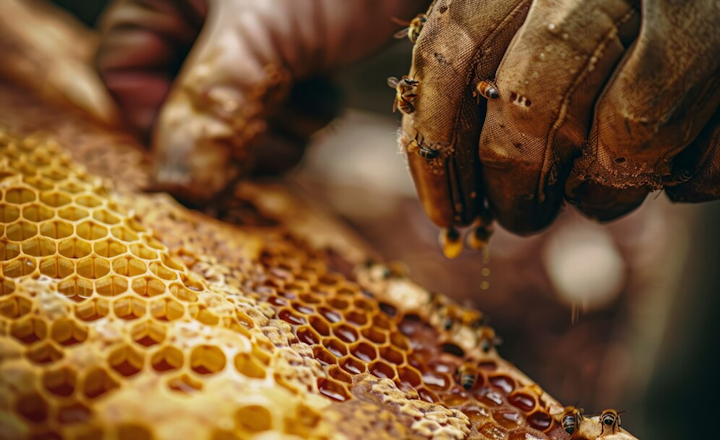
Harvesting honey from a beehive is a delicate yet rewarding process that requires careful planning, patience, and the right equipment. For beekeepers, whether novices or seasoned, understanding the steps involved in harvesting honey is essential to ensure a successful and sustainable yield. This guide provides a comprehensive overview of how to harvest honey from a beehive, ensuring both the beekeeper and the bees remain safe and healthy.
Preparing for the Harvest
1. Timing the Harvest
The ideal time to harvest honey is late summer to early fall when the bees have had ample time to collect nectar and convert it into honey. Ensure that the honeycomb is capped, which indicates that the honey has the right moisture content and is ready for extraction. Uncapped honey can ferment due to excess moisture.
2. Gathering Equipment
Before starting the harvest, gather all necessary equipment. This includes:
- Beekeeping suit and gloves for protection.
- A smoker to calm the bees.
- A bee brush to gently remove bees from the frames.
- A hive tool to pry open the hive and remove frames.
- A honey extractor, which can be manual or electric.
- Uncapping tools such as an uncapping knife or fork.
- A clean, food-grade bucket or container for collecting honey.
Steps to Harvest Honey
1. Smoking the Hive
Start by using the smoker to puff smoke at the entrance of the hive. Smoke helps to calm the bees, making them less aggressive and easier to work with. It masks the alarm pheromones that bees release, reducing the risk of stings.
2. Removing Frames
Carefully open the hive using the hive tool. Inspect the frames to identify those filled with capped honey. Gently lift these frames out of the hive. Use the bee brush to softly sweep away any bees clinging to the frames. Place the frames in a clean, dry container or an empty super.
3. Uncapping the Honeycomb
Once the frames are removed, the next step is to uncap the honeycomb. This involves removing the wax caps that the bees have sealed over each cell. Use an uncapping knife, which can be heated, or an uncapping fork to gently scrape off the wax caps. Collect the wax for later use in making beeswax products.
4. Extracting the Honey
Place the uncapped frames in the honey extractor. The extractor uses centrifugal force to spin the frames, forcing the honey out of the comb. For manual extractors, turn the crank steadily. For electric extractors, ensure it is set to a moderate speed to avoid damaging the comb. The honey will collect at the bottom of the extractor.
5. Filtering and Bottling
Once the honey is extracted, it needs to be filtered to remove any residual wax and impurities. Pour the honey through a fine mesh strainer or cheesecloth into a clean, food-grade bucket. Allow the honey to settle, and then pour it into sterilised jars or bottles for storage.
Post-Harvest Considerations
1. Returning Frames
After extraction, return the empty frames to the hive. The bees will clean up any residual honey and start preparing the comb for future use. This practice ensures minimal waste and supports the hive's ongoing health.
2. Storing Honey
Store harvested honey in a cool, dry place away from direct sunlight. Properly sealed jars will keep honey fresh for an extended period. Honey is naturally antimicrobial and can last indefinitely when stored correctly.
3. Hive Inspection
Post-harvest is an excellent time to inspect the hive for any signs of disease, pests, or other issues. Addressing these promptly ensures the health and productivity of the hive.
Conclusion
Harvesting honey is a fulfilling activity that requires attention to detail and respect for the bees. By following these steps, beekeepers can ensure a successful harvest while maintaining the wellbeing of their hive. Whether for personal consumption or commercial sale, the process of harvesting honey is a testament to the incredible work of bees and the symbiotic relationship between humans and these vital pollinators.
| < Prev | Next > |
|---|




